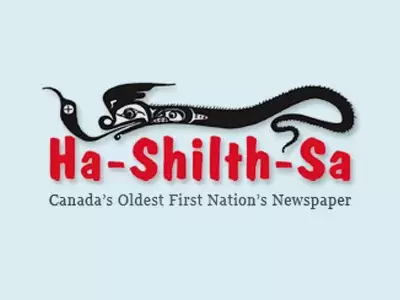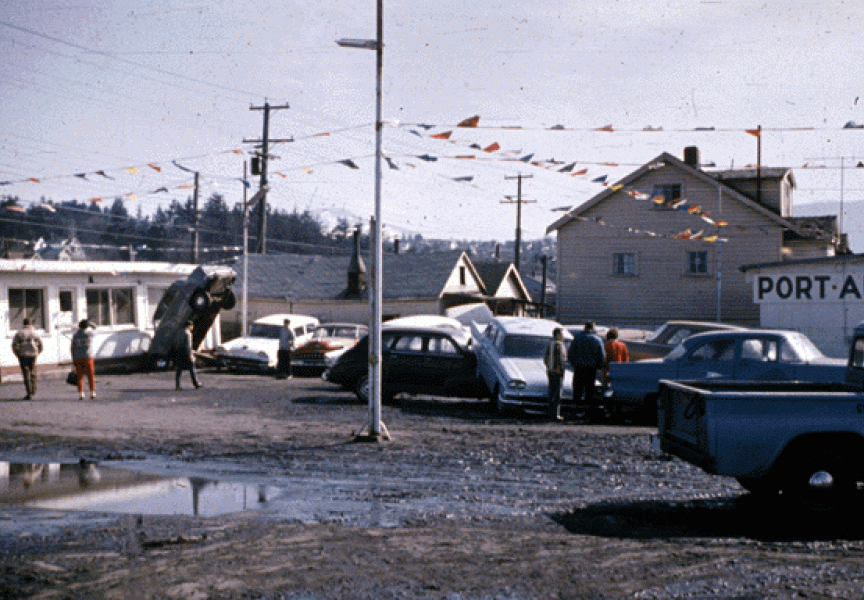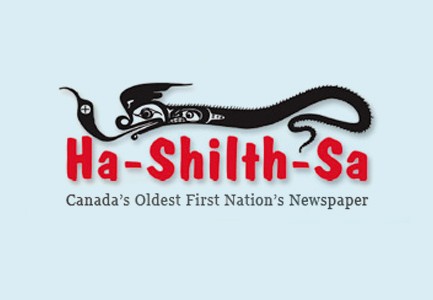B.C. Minister of Environment Terry Lake is releasing the latest update to government's Tsunami Debris Management Plan in advance of a potential increase in tsunami debris that may begin washing up on B.C.'s coastline this winter.
(Note: There will be a Tsunami Debris briefing at the Nuu-chah-nulth Annual General Meeting currently scheduled on day two, Sept. 27 at Maht Mahs near Port Alberni.)
The Tsunami Debris Coordinating Committee, a joint committee chaired by senior representatives from the B.C. government and Government of Canada, has completed Phase One and has now established a framework for Phase Two of a Tsunami Debris Management Plan.
While tsunami debris may present a planning challenge, the reality is that debris from Asia and other parts of the world washes up regularly along the B.C. Coast. To date, there has only been a minimal amount of confirmed debris from the tsunami and scientific experts have determined that it is unlikely any tsunami debris that may come onto B.C. shores will pose a significant environmental or public-health risk. With a strong and scalable Tsunami Debris Management Plan in place, B.C. will be well equipped to manage the situation.
"Tsunami debris presents a unique challenge that will require a collaborative effort. No one is going to face this alone," said Minister Lake.
"We do not know the extent of the debris that may still come, but we are continuing to monitor the situation and have taken appropriate steps to be well prepared and organized in the event that something significant occurs.”
The Phase Two framework focuses on how the government of B.C. will work with coastal communities to assess and determine specific challenges associated with the collection, removal, and landfilling of tsunami debris. The framework also outlines several other components including: monitoring and surveillance of tsunami debris, establishing a framework for volunteer participation and developing protocols for aquatic invasive species.
Phase Two is being developed in consultation with First Nations and local governments and is expected to be completed by the end of October. Meeting this timeline will require the concerted efforts of all partners.
The Phase One plan, posted last month on government's tsunami debris website - www.tsunamidebrisbc.ca- established protocols on how to deal with tsunami debris, identified roles and responsibilities of government and partner agencies, and provided an assessment of risks relating to with tsunami debris.
Additionally, the Ministry of Environment has named Jonn Braman as the regional director for tsunami debris. In this new position, which reports to the co-chairs of the Tsunami Debris Coordinating Committee, Braman will lead the collaborative efforts of the federal/provincial partners in dealing with tsunami debris.
Braman was previously the South Coast regional director responsible for environmental protection and has participated in cleanups and disaster response following the 2004 tsunami in Indonesia, the 2007 earthquake and tsunami in Peru and the 2009 tsunami that hit Samoa.
"We recognize that communities have concerns about how the possible arrival of tsunami debris may affect them which is why we have put together a strong forward-thinking tsunami debris management plan," said Jonn Braman, regional director for tsunami debris.
"As part of the Phase Two framework, we will be working with these communities to get ahead of the game and prepare for possible challenges such as the recycling, disposal and landfilling of tsunami debris.
Quick Facts:
* The anticipated tsunami debris is a result of the magnitude 9.0 earthquake that struck Japan on March 11, 2011, claiming more than 15,000 lives and damaging more than 100,000 buildings.
* The tsunami washed an estimated five million tonnes of debris into the sea. It is estimated that 70 per cent sank off the coast of Japan, leaving approximately 1.5 million tonnes floating in the Pacific Ocean. Since leaving the coast of Japan, it has been widely dispersed by ocean currents and winds.
* In comparison, 1.5 million tonnes is roughly half of the three million tonnes of municipal solid waste produced in Metro Vancouver in 2010.
* Environment Minister Terry Lake has personally visited Haida Gwaii and Ucluelet - coastal areas expected to be likely sites for tsunami debris to come ashore - to meet with local government officials and First Nations and take a first-hand look at the beaches.
* In March 2012, the governments of B.C., Oregon, Washington and California announced they will collaborate to manage potential tsunami debris that may wash up along the West Coast.
* The Tsunami Debris Coordinating Committee continues to co-ordinate with American Pacific coastal agencies in Hawaii, California, Oregon, Washington and Alaska on a regular basis and planning for the tsunami debris in B.C. has kept pace with US counterparts.
* Large collections or objects should be reported through: DisasterDebris@noaa.govThis site is linked to B.C.'s Tsunami Debris Coordinating Committee.
* If a person sees something on the beach that appears to be a source of pollution or hazardous material, they should contact the Provincial Emergency Coordination Centre at 1 800 663-3456.



